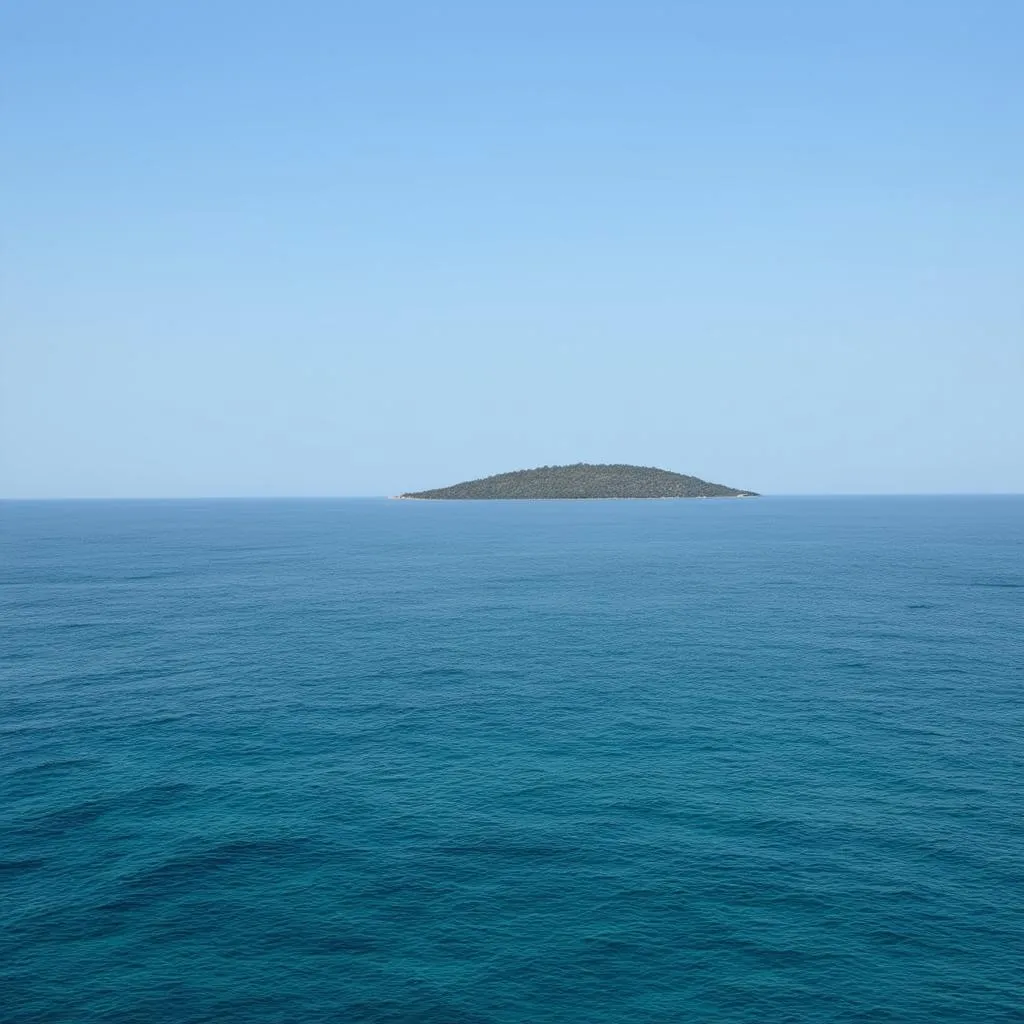Have you ever been driving down a long, straight road on a scorching summer day, only to see a shimmering pool of water ahead that seems to vanish as you approach? That, my friends, is a mirage, a fascinating optical illusion that has captivated travelers for centuries. Contrary to popular belief, a mirage doesn’t occur because light travels faster; it’s all about the bending of light rays due to temperature differences in the air.
Let’s delve into the science behind this mesmerizing phenomenon and explore how it intertwines with our travel experiences.
The Science Behind the Illusion: It’s All About Refraction
While the phrase “A Mirage Occurs When Light Travels Faster” is incorrect, the speed of light does play a part, albeit indirectly. Here’s the breakdown:
- Temperature Gradients: On a hot day, the ground absorbs a significant amount of heat from the sun. This heat then radiates back up, warming the air layer closest to the ground much more than the air higher up. This creates a temperature gradient.
- Light Bends: Light travels at different speeds through different mediums. When light passes from cooler, denser air to hotter, less dense air, it speeds up. This change in speed causes the light to bend, a phenomenon known as refraction.
- The Illusion Takes Shape: As light from the sky travels towards the hot ground, it gets refracted upwards towards our eyes. Our brain, however, interprets light as traveling in straight lines. This leads us to perceive the refracted skylight as a shimmering reflection on the ground, creating the illusion of water.
Mirages and Your Travel Tales
Mirages are most commonly associated with deserts, like the Sahara Desert in Africa or the Mojave Desert in California. Picture this: You’re trekking through the vast expanse of sand dunes, the sun beating down relentlessly. Just when your thirst reaches its peak, a glistening oasis appears in the distance, offering a beacon of hope.
But alas, as you get closer, the oasis recedes, the shimmering water dissolving into thin air. This classic desert mirage, known as an “inferior mirage” because the illusion appears below the actual object (the sky), has tricked many a weary traveler.
 Desert Mirage
Desert Mirage
Beyond the Desert: Mirages in Unexpected Places
Mirages aren’t exclusive to scorching deserts. You might be surprised to know that they can occur in various locations, especially where there are significant temperature differences.
Imagine driving along the Pacific Coast Highway in California. As you round a bend overlooking the vast Pacific Ocean, you spot a distant island seemingly floating above the water. This “superior mirage” occurs when a layer of cold air sits close to the water with a layer of warm air above it. Light rays from the island bend downwards as they pass through the cold air, making the island appear higher than it actually is.
 Superior Mirage Ocean
Superior Mirage Ocean
Travel Tips and Tricks: Navigating the Illusion
While mirages are captivating, they can be misleading, especially for travelers in unfamiliar territories. Here are a few things to keep in mind:
- Trust Your Instincts: If something seems too good to be true, it probably is. If you’re unsure about a water source in the distance, consult a map or use a compass to confirm its location.
- Hydrate Regularly: Don’t wait until you’re thirsty to drink water, especially in hot climates. Carry an adequate supply of water and stay hydrated throughout your journey.
- Seek Local Advice: When traveling to new destinations, consult local guides or residents for advice on navigating the terrain and potential hazards, including mirages.
Exploring the World, One Optical Illusion at a Time
Mirages, with their mesmerizing illusions, remind us that perception is not always reality. They add an element of wonder and intrigue to our travel experiences, encouraging us to question what we see and appreciate the power of nature’s tricks.
So, the next time you’re on an adventure, keep an eye out for these fascinating optical illusions. Who knows what other wonders await you on your journey?

